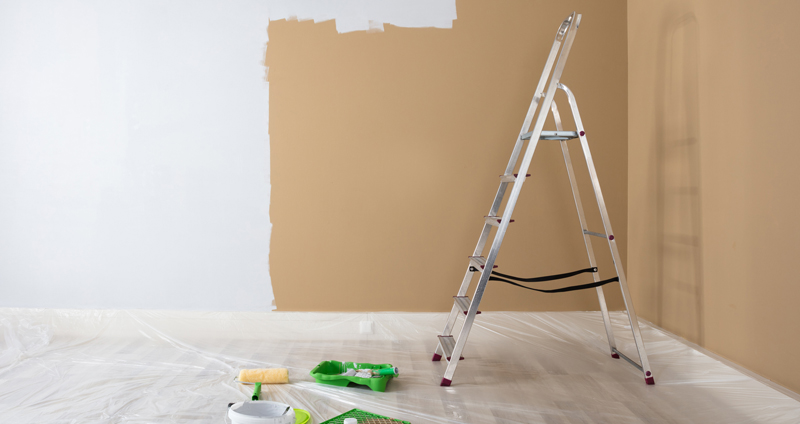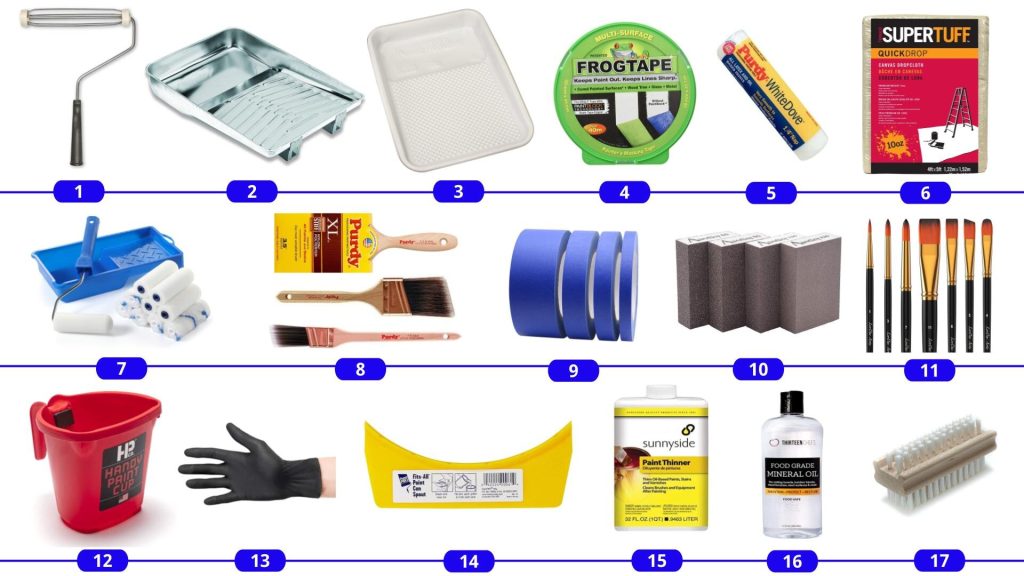
When your home walls look excessively outdated and dull, you sometimes just want to pick up the brushes and paint the walls yourself. If you seriously consider painting your home walls on your own, you should be very careful. Learning how to paint a room properly is essential for beginners and new homeowners. To paint your room like a pro when doing it yourself, follow these tips.
1. Plan and prepare

Start by thinking about how you want the finished project to look and selecting the right paint color for your room. Choose the appropriate type and finish of paint for your desired outcome. Consider factors such as existing décor, the room’s lighting, the desired ambiance, and any specific requirements (e.g., moisture-resistant paint for bathrooms or kitchens). And don’t forget to look up and see whether the ceiling could also use a refresh. After that, Gather all the necessary supplies, including:
- Paint
- Paint roller and extension pole
- Paint brushes
- Paint tray
- Paint thinner (optional)
- Drop cloths
- Painter’s tape
- Spackle
- Sandpaper
- Putty knife
- Ladder
2. Clear the room
Remove furniture, decorations, and fixtures from your painting area. If moving everything out is impossible, move items to the center of the room. Cover them with a drop cloth or plastic sheets and do the same with the floor and any cabinetry or countertops to protect them from paint splatters.
3. Prepare the walls
First, clean the walls. If you have washable home paint, then using a large cellulose sponge and a solution of water mixed with a few drops of mild dishwashing liquid, clean your walls to remove any dust, dirt, and grease. If not, use a moist sponge to clean the walls. Then, Inspect the walls for any cracks, holes, or imperfections. Use spackle to fill in these areas and sand them smooth once dry. Wipe away dust with a damp cloth and let the walls dry completely.
4. Protect surfaces
Use painter’s tape to mask off areas you don’t want to paint, such as baseboards, trim, windows, and door frames. Cover the floor with drop cloths or plastic sheets to protect it from paint spills or splatters.
5. Prime the walls (if necessary)
If you’re painting over a darker color or covering stains, using a primer can help improve coverage and ensure a more even finish. Besides that, primer helps the paint stick to the walls and minimizes the number of paint coats needed.
Once your walls are ready, use primer based on your wall types and purpose. Pour enough primer in a tray so that it almost fills the well toward the bottom. Roll the primer onto the wall. Apply an even coat from the floor to the ceiling, covering the walls entirely. Let the primer dry for at least four hours.
Note: Every primer brand has different instructions. So, follow the manufacturer’s instructions for the specific primer you are using.
6. Cut in the edges
Use a high-quality angled brush to cut in along the edges of the walls, including corners, ceiling lines, and areas next to the trim. Apply a narrow strip of paint, creating a border where the roller can’t easily reach. Take your time and use steady, precise strokes.
7. Use the proper technique with a roller
Pour paint into a roller tray and load the roller by rolling it back and forth in the paint tray. Start rolling from the top of the wall, working your way down in sections. Apply even pressure and use a “W” or “M” pattern to ensure even coverage. Roll from ceiling to floor and overlap each stroke slightly.
8. Maintain a wet edge
To avoid visible lines and overlapping marks, maintain a “wet edge” as you work. This means always keeping a wet or partially wet area on the wall as you move along. This helps blend the paint and achieve a smooth finish.
9. Apply multiple coats
Allow the first coat to dry according to the manufacturer’s instructions. Apply additional coats as needed for full coverage and color intensity. Use the same cutting-in and rolling techniques for each coat.
10. Finishing touches
Once the final coat is dry, carefully remove the painter’s tape at a 45-degree angle to prevent peeling. Touch up any areas that need attention. Clean your brushes, rollers, and paint trays thoroughly with water or the appropriate cleaning solution.
By following these tips and taking your time, you can achieve a professional-looking paint job when painting your room by yourself. If these steps are still difficult for you to do it, you can contact us. We will help.

Comments